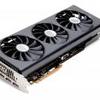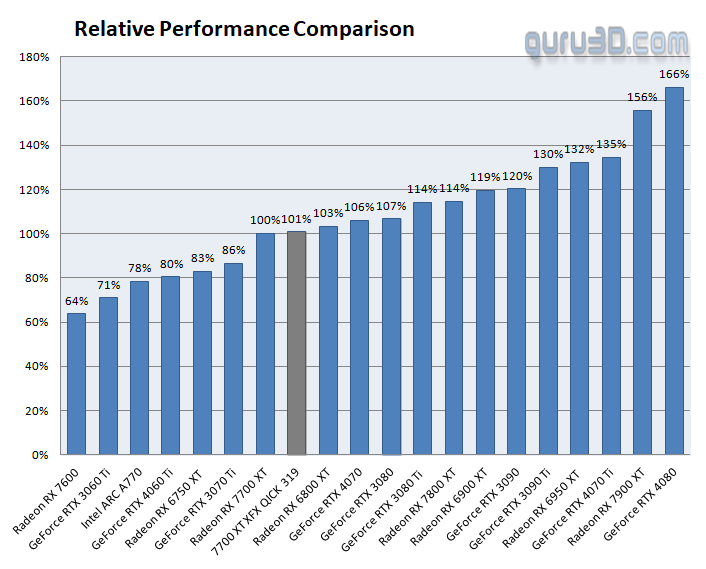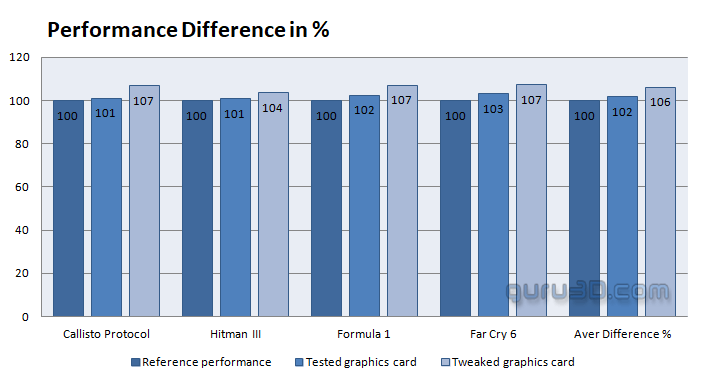Final words and conclusion
Final words
XFX diverged from AMD's reference design, adopting a custom design for all its models. These graphics cards belong to XFX's Speedster series, which emphasizes optimized airflow and superior cooling. The specific specifications, including game and boost clocks for these cards, are yet to be revealed. The Speedster GPU lineup consists of two main series: MERC and QICK. The MERC series targets the high-end user segment with a comprehensive set of advanced features. Conversely, the QICK series caters to mainstream users who might not need the comprehensive features of the MERC series. Both series adopt a triple-fan setup with 13 blades and are likely to feature dual-BIOS. The primary distinction is in the backplate design: MERC boasts a ridged backplate with an illuminated XFX logo, while QICK possesses a more basic design sans lighting. The Radeon RX 7700 XT QICK 319 Black Edition, while bearing similarities, showcases a 2.5-slot triple-fan cooler with a unique design. The RX 7700 XT series doesn't introduce revolutionary tech enhancements but offers incremental growth in sheer performance. Performance-wise, the RX 7700 XT parallels its 6800 counterparts in this competitive niche. While alternative products might have their unique merits, prospective buyers are advised to evaluate their choices meticulously. The RX 7700 XT variant offers 12GB of graphics memory with a narrower 192-bit memory interface, making it attractive for those balancing performance against expenditure. In contrast, the 7800 XT 16GB 256-bit guarantees a marginally superior performance level but requires a larger financial and power commitment, exceeding 500 Euros.
Performance
The RX 7700 XT graphics cards offer proper rendering quality and capability suitable for mainstream to high-end gaming. Although it doesn't exhibit huge progression from its predecessors (6800), it demonstrates enhanced raytracing performance. Designed primarily for gamers who prioritize a new monitor, the RX 7700 XT and 7800 XT also support QHD monitor resolutions. Within the RX 7000 series, the upgraded rasterizer engine overcomes former performance constraints, highlighting notable raw shader engine capabilities. While NVIDIA's Raytracing and DLSS3 technologies surpass AMD's FSR2 and upcoming FSR3, the RX 7700/7800 XT's performance with FSR2 is still noteworthy, and enabling FSR is recommended. However, based on frametime results, AMD appears to have potential improvements to make at the driver level, as some stuttering was observed. Overall the XFX card was 1 maybe 2% faster than the reference.
Cooling & noise levels
Our test shows that gaming will get you an approximate volume level of 37-38 decibels, that however is still pretty inaudible as it's the airflow messing with the DBa meter a little. Moreover, the graphics card temperature is around 60 degrees Celsius. Furthermore, our utilization of FLIR imaging failed to unveil any worrisome observations.
Energy
Please keep in mind that the Radeon RX 7700 XT is positioned as a gaming product intended for the mainstream market and it consumes a fair amount of energy. When operating at maximum load, the reference edition draws approximately 255 Watts on average (total board power or TBP). This power consumption is directly linked to the amount of heat emitted by the GPU, which is situated within an enclosed casing.
Coil whine
Every graphics card will inevitably produce a discernible buzzing sound known as coil whine when operating at high FPS. Is it bothersome? It becomes noticeable once you push the frame rates to extremely high levels. In a closed computer case, this noise tends to recede into the background. However, when the chassis is open, the coil whine or squeal becomes audible. Almost all graphics cards exhibit this phenomenon to some extent, particularly when operating at higher frame rates. Despite its presence, we have not noticed it enough to be a significant inconvenience.
Pricing
The reference edition comes with a price tag of USD 449, which still can be considered substantial for a device primarily used for playing PC games in Full HD resolution. In the European Union, you must convert the currency and factor in the value-added tax, bringing the total to around 299-309 euros. Moreover, advanced AIB cards will be even more expensive. Based on MSRP this card, however does offer the best bang for buck. This AIB card will, however cost roughly 460-470 USD.
Tweaking
The card can be effectively tweaked with ease; one beneficial feature is the power limiter, allowing for a wattage increase of up to +15%. This serves as the initial and fastest option for tweaking. By utilizing this option, you can achieve enhanced performance while staying within the card's default power allocation. Additionally, the boost clock frequency can be set at a suitable 2850 MHz, although it may dynamically fluctuate to approximately 2800 MHz due to variations in frequencies across different game titles. Furthermore, the memory can be optimized to operate at around 19.2 Gbps. When all these adjustments are combined, they result in approximately 4% additional performance gains in demanding GPU scenarios, measured relative to the baseline performance. Add to that the factory tweak offering 2%, and you're at 6% additional performance.
Conclusion
The QICK series belong to XFX's Speedster series, specifically crafted for efficient airflow and superior cooling. In contrast, the QICK series is tailored for mainstream users who may not need the extensive features provided by the MERC series. Both series employ a triple-fan configuration with 13 blades, and a dual-BIOS function. A notable aspect of the Radeon RX 7700 XT is its pricing. With the reference set at $449, this product caters to those desiring robust performance at an accessible price point. However, there's a sentiment that a more fitting price range would be between $349 and $399. The Speedster card's pricing hovers around $469, though this isn't finalized based on current information. The Radeon RX 7700 XT series prioritizes rasterized shading, offering a reliable QHD gaming performance. The addition of extra L3 cache distinctly enhances performance in Full HD / Quad HD resolutions and games that are CPU-demanding. While the product delivers admirable performance with an aesthetic design and reduced noise levels, its power consumption is on the higher side. Furthermore, with NVIDIA making strides in Raytracing, Tensor, and AI-assisted operations, AMD has ground to cover in these domains. That said, for traditional rasterized shading gaming, the Radeon RX 7700 XT remains competitive. The XFX design is visually appealing and ensures excellent thermal performance. However, its advantages over the more affordable design cards remain limited considering its slightly high price tag.
- Download AMD Radeon drivers
- Sign up to receive a notification when we publish a new article.
- Or go back to Guru3D's front page
- Hilbert, LOAD"*",8,1.
Note: Given the sentiment about award badges, we decided not to apply them to reference graphics card reviews.



